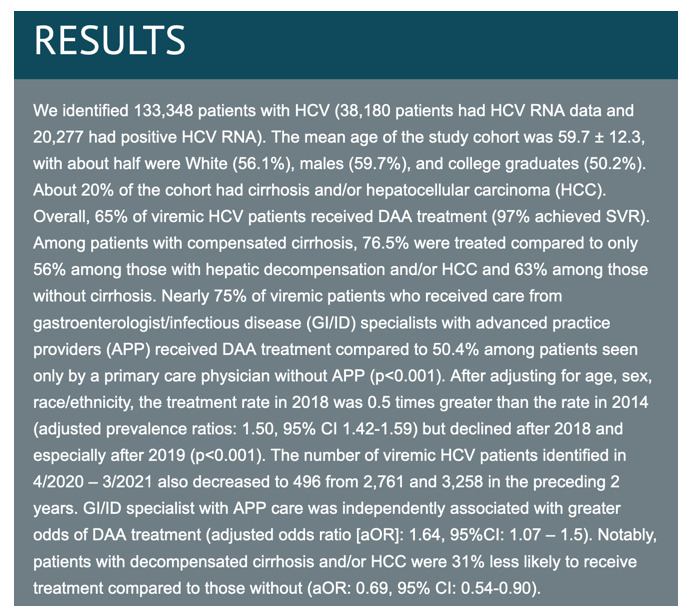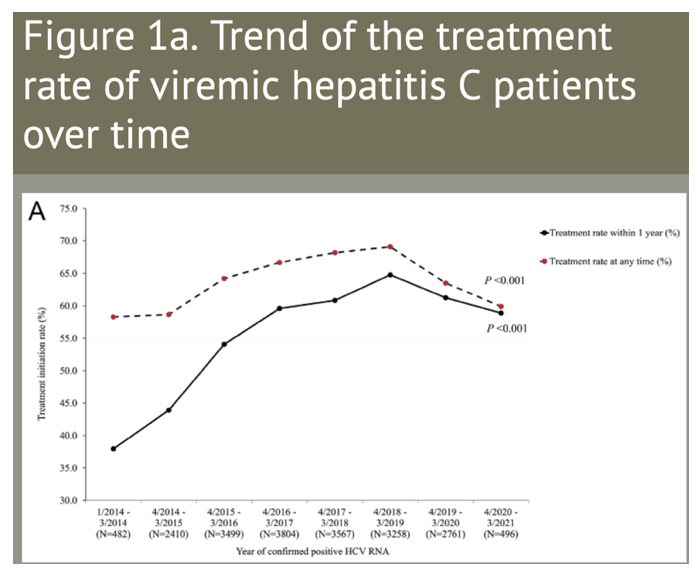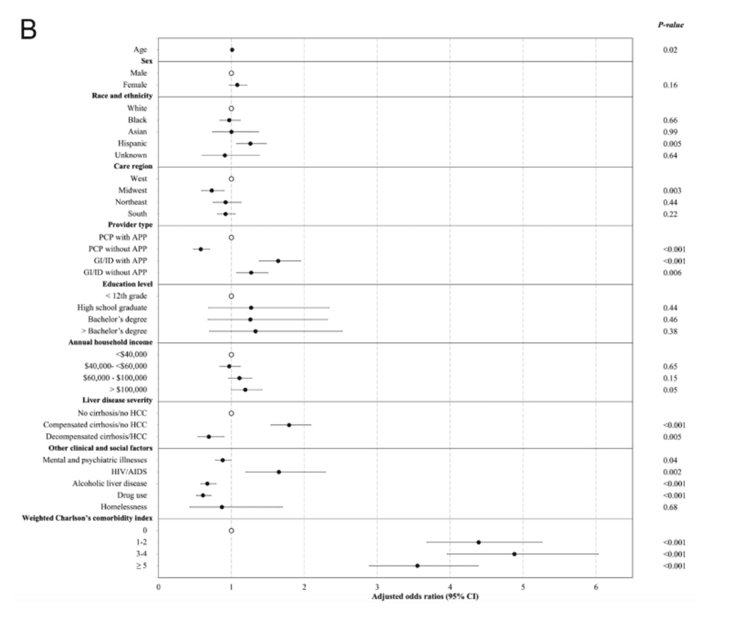 |
 |
 |
| |
HCV Treatment Rates Decreased During COVID: CHARACTERISTICS AND TREATMENT RATE OF PATIENTS WITH HEPATITIS C VIRUS INFECTION IN THE DAA AND COVID- 19 ERAS IN THE UNITED STATES
|
| |
| |
AASLD 2022 Nov 4-8
Vy H. Nguyen1, Leslie Kam1, Yee Hui Yeo1,2, Daniel Huang3,4, Linda Henry1, Ramsey Cheung1,5 and Mindie H. Nguyen1,6, (1)Division of Gastroenterology and Hepatology, Stanford University Medical Center 2)Division of General Internal Medicine, Cedars- Sinai Medical Center, (3)Department of Medicine, Yong Loo Lin School of Medicine, National University of Singapore, (4)Division of Gastroenterology and Hepatology, Department of Medicine, National University Hospital, Singapore, (5)Division of Gastroenterology and Hepatology, Veterans Affairs Palo Alto Health Care System, (6)Department of Epidemiology and Population Health, Stanford University School of Medicine
program abstract
Background: Real- world nationwide data on hepatitis C virus (HCV) treatment rate in the U.S. are sparse. Our primary goal was to evaluate HCV treatment rate in the direct acting antivirals (DAA) era, including the COVID- 19 timeline.
Methods: Using de-identified Optum's Clinformatics® Database Mart (2014- 2021), we evaluated characteristics of HCV patients in the DAA and COVID-1 9 eras, assessed treatment rate and changes over time with adjusted log- binomial re-gression, and factors associated with treatment using multivariable logistic regression.
Results: We identified 133,348 patients with HCV (38,180 patients had HCV RNA data and 20,277 had positive HCV RNA). The mean age of the study cohort was 59.7 ± 12.3, with about half were White (56.1%), males (59.7%), and college graduates (50.2%). About 20% of the cohort had cirrhosis and/or hepatocellular carcinoma (HCC). Overall, 65% of viremic HCV patients received DAA treatment (97% achieved SVR). Among patients with compensated cirrhosis, 76.5% were treated compared to only 56% among those with hepatic decompensation and/or HCC and 63% among those without cirrhosis. Nearly 75% of viremic patients who received care from gastroenterologist/infectious disease (GI/ID) specialists with advanced practice providers (APP) received DAA treatment compared to 50.4% among patients seen only by a primary care physician without APP (p<0.001). After adjusting for age, sex, race/ethnicity, the treatment rate in 2018 was 0.5 times greater than the rate in 2014 (adjusted prevalence ratios: 1.50, 95% CI 1.42- 1.59) but declined after 2018 and especially after 2019 (p<0.001). The number of viremic HCV patients identified in 4/2020 - 3/2021 also decreased to 496 from 2,761 and 3,258 in the preceding 2 years. GI/ID specialist with APP care was independently associated with greater odds of DAA treatment (adjusted odds ratio [aOR]: 1.64, 95%CI: 1.07 - 1.5). Notably, patients with decompensated cirrhosis and/or HCC were 31% less likely to receive treatment compared to those without (aOR: 0.69, 95% CI: 0.54- 0.90).
Conclusion: Less than two-thirds of insured viremic HCV patients received DAA treatment with declines in the treatment rate and number of viremic HCV diagnosis since 2019, especially during the COVID- 19 pandemic. Alarmingly, only about half of patients who had hepatic decompensation and/or HCC received DAA treatment. Further efforts are needed to increase HCV treatment, especially for those with cirrhosis and HCC.




|
| |
|
 |
 |
|
|